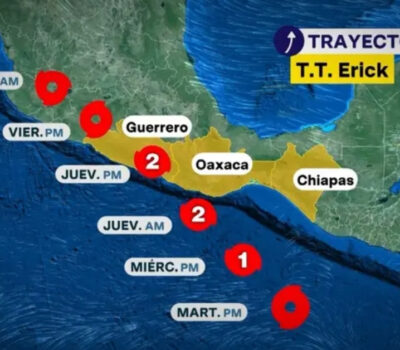Samantha Frachey of Grupo Lomas cautions against a rate war in Cancún, citing risks to the destination’s value as hotel occupancy drops up to 15 percent.
As hotel occupancy in Cancún sees a noticeable decline, one of the destination’s most prominent tourism executives is warning the industry against slashing prices in response—arguing that such a move could damage the long-term value of the region’s hospitality market.
Samantha Frachey, vice president of the Council and CEO of Grupo Lomas, says occupancy is down between 10 and 15 percent compared to previous years. But rather than panicking with steep discounts, she emphasized the importance of preserving Cancún’s reputation as a premium destination.
“The key is to avoid a tariff war to maintain Cancún as a destination worth its price,” Frachey said in an interview, reiterating concerns that a race to the bottom on pricing could backfire for the region.
She pointed to the area’s high-end hotel offerings as a cushion for the market. “There are luxury hotels here that range from $700 to $2,000 per night. These establishments set a standard,” she noted. “A hotel that lowers its rates impacts the market significantly. We saw what happened in Tulum when rates dropped—it changed the perception of the destination. We shouldn’t let that happen here.”
According to Frachey, several factors are influencing the drop in occupancy. These include an increase in overall hotel inventory across the region and rising competition from vacation rental platforms such as Airbnb. As more visitors seek alternative accommodations, traditional hotels are left with more rooms to fill, which puts pressure on pricing strategies.
Still, she insists the answer isn’t to cheapen the destination but to emphasize value and diversify what’s offered to travelers.
Sargassum concerns add pressure
Another factor weighing on Cancún’s tourism appeal is the ongoing presence of sargassum—a brown seaweed that periodically washes up on Caribbean beaches, affecting the vacation experience.
Frachey acknowledged the issue but insisted that sargassum should not be a deterrent to visiting the region. “You don’t stop coming to Cancún because there’s sargassum. You can go to Xcaret, or to Valladolid and the cenotes. There are many things to do,” she said.
She added that more needs to be done to educate tourists about the inland experiences available in Quintana Roo, shifting the narrative away from solely beach-focused travel.
“We need a better strategy to communicate with visitors, to let them know that we don’t depend on sargassum. The state offers so much more,” Frachey explained.
Long term, she called for experts to be brought in to develop a consistent, science-backed plan to deal with sargassum so that occupancy levels no longer fluctuate based on the presence of the seaweed. “We need a permanent solution,” she said.
Maintaining value through stability
Frachey’s warning about a potential rate war comes at a time when global travelers are showing increased price sensitivity. Still, she believes that Cancún should not compete on price alone but should lean into its strengths—luxury accommodations, world-class attractions, and a unique cultural and natural setting.
“Cancún is worth what it costs,” she concluded. “Let’s make sure we keep it that way.”
Samantha Frachey of Grupo Lomas cautions against a rate war in Cancún, citing risks to the destination’s value as hotel . . .












